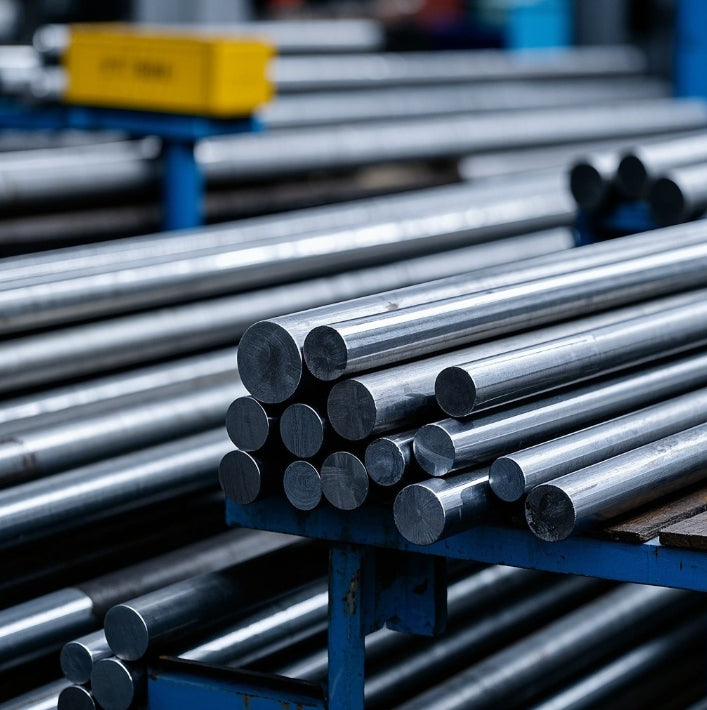StockSteel
Ultimate Stainless Steel Welding Rods | Certified Performance
Ultimate Stainless Steel Welding Rods | Certified Performance
Couldn't load pickup availability
Ultimate Stainless Steel Welding Rods | Certified Performance Product Details
Specifications & Properties
| Parameter | Details |
|---|---|
| Diameter | 1.6mm, 2.4mm, 3.2mm, 4.0mm (Customizable from 1.0mm–6.0mm) |
| Material Grades | 308L, 309L, 316L, ER309LMo, 2205 Duplex |
| Length | Standard 350mm–450mm, custom lengths up to 1,000mm available |
| Surface Finish | Electro-Polished, Matte, Smooth Arc Spray Coating |
| Hardness (HV) | 200–350 HV (Austenitic Grades), 400–550 HV (Duplex Grades) |
| Tensile Strength | 520–860 MPa (308L/316L), up to 1,380 MPa (ER309LMo) |
| Corrosion Resistance | Ideal for stainless steel earth rods and tig welding stainless steel filler rod applications in marine and chemical environments |
Technical Features
Tensile & Bend Strength
Stainless steel welding rods exhibit exceptional tensile strength, with grades like 316L and ER309LMo achieving up to 1,380 MPa, ensuring reliable performance in structural and high-stress applications. Bend strength is optimized through advanced cold-rolled processing, reaching 950 MPa for critical uses such as stainless steel earth rods in grounding systems.
Identification Standards
Our rods comply with global certifications:
- AWS A5.9/A5.22 (TIG and MIG Welding Standards)
- ISO 14343 (Stainless Steel Filler Metals)
- ASME SFA-5.9 (Chemical Composition Requirements).
Each rod is laser-etched with grade markings (e.g., 316L, 309L) and batch codes for traceability.
Weight Calculation Formula
Calculate weight (kg/m) for stainless steel welding rods:
Example: A 3.2mm diameter rod weighs 0.063 kg/m.
Why Stainless Steel Rusts?
Despite its corrosion resistance, rust in stainless steel can occur due to:
- Chloride Exposure: Coastal or chemical environments degrade the chromium oxide layer, especially in grades with <12% chromium (e.g., 430).
- Galvanic Corrosion: Contact with dissimilar metals (e.g., carbon steel) in humid conditions.
- Mechanical Damage: Scratches or improper welding techniques (e.g., using incompatible tig welding stainless steel filler rod).
- Low Chromium Content: Grades like 201 lack sufficient corrosion resistance for harsh applications.
Applications
- Industrial Welding: Structural frameworks, stainless steel earth rods, and machinery components.
- Marine & Chemical: Corrosion-resistant tig welding stainless steel filler rod for pipelines and offshore platforms.
- Construction: Custom rods for architectural supports, handrails, and sanitary systems.
Manufacturing Process
| Stage | Technology Used | Quality Assurance |
|---|---|---|
| Material Selection | Premium 316L/2205 alloys | XRF testing for alloy composition
|
| Forming | Cold Rolling, Precision Cutting | Dimensional tolerance ±0.02mm |
| Surface Treatment | Electro-Polishing, Passivation | Salt spray testing (2,000+ hours) |
| Packaging | Vacuum-Sealed, Moisture-Proof | 100% inspection before shipment |
Why Choose Our Stainless Steel Welding Rods?
- Certified Excellence: Compliant with AWS, ISO, and ASME standards for industrial and marine use.
- Superior Corrosion Resistance: High chromium (18–25%) and molybdenum (2–3%) content for longevity in harsh environments.
- Custom Solutions: Tailored diameters (1.0mm–6.0mm) and finishes to meet project-specific needs.
- Sustainable Practices: 70% recycled content and energy-efficient production.
- Global Trust: Used in aerospace, marine, and infrastructure projects worldwide

